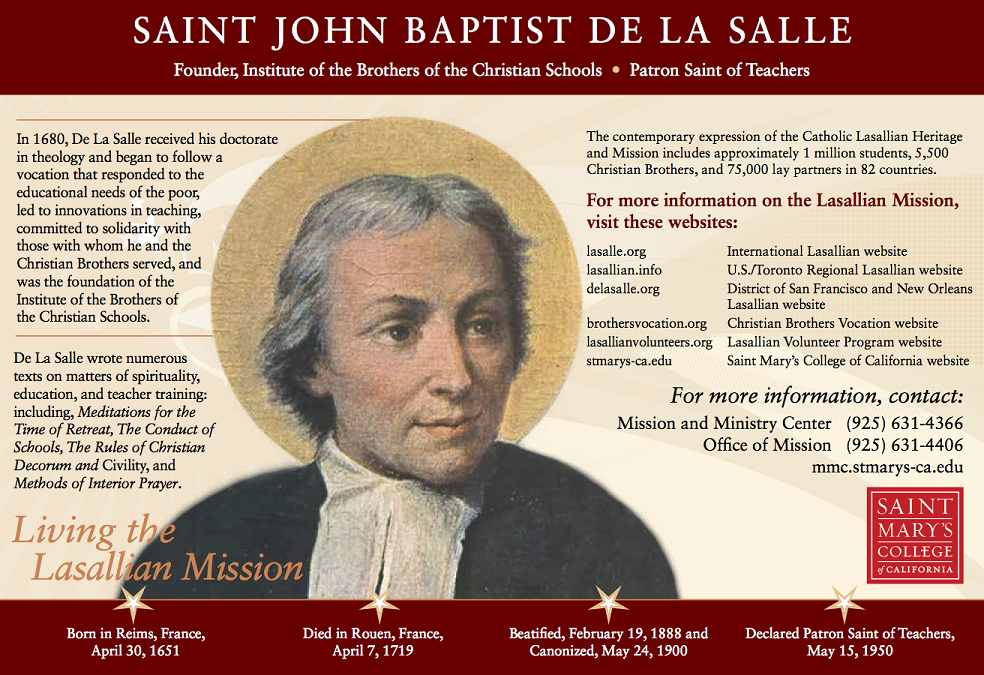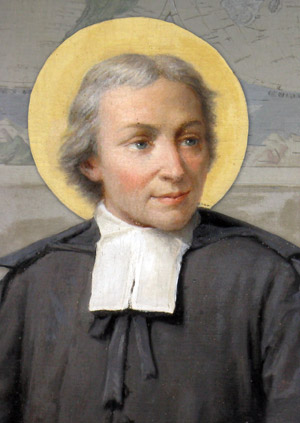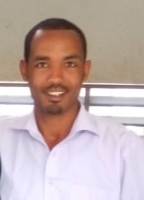
Founding
The Christian Brothers founded St. John Baptist de La Salle Catholic School in Addis Ababa, Ethiopia in 2010 to serve the educational needs of children living in Addis Ababa and the Oromia Regions. While the school is open to the general public for a moderate fee, the children from the nearby orphanage run by St. Mother Teresa’s Community do not have to pay. The school is located on the border between Addis Ababa and Oromia regions which makes it more unique and special. In the year 2010, the school served 668 students. Currently, the school is serving more than 2000 students who come from different races, denominations, varied economic backgrounds and artisans, and health statuses
Our Founders
BROTHERS OF THE CHRISTIAN SCHOOL
Brothers of the Christian Schools, a religious community, commonly called Christian Brothers, was established by the French educator St. John Baptist de La Salle, at Reims, France, in 1680. The brothers take the religious vows of poverty, chastity, and obedience and service to the poor through education and loyalty. In the mid-1980s, community residences numbered more than 1,250 throughout the world. About 10,000 brothers taught approximately 800,000 pupils. Our headquarters in the United States are located at Romeoville, Illinois.

St John Baptist De La Salle

John Baptist de La Salle was born into a world very different from our own. He was the first son of wealthy parents living in France over 300 years ago. Born at Reims, John Baptist de La Salle received the tonsure at age eleven and was named Canon of the Reims Cathedral at sixteen. Though he had to assume the administration of family affairs after his parents died, he completed his theological studies and was ordained a priest on April 9, 1678.Two years later he received a doctorate in theology. Meanwhile he became tentatively involved with a group of rough and barely literate young men in order to establish schools for poor boys.
At that time, a few people lived in luxury, but most of the people were extremely poor: peasants in the country, and slum dwellers in the towns. Only, a few could send their children to school; most children had little hope for the future. Moved by the plight of the poor who seemed so “far from salvation” either in this world or the next, he determined to put his own talents and advanced education at the service of the children “often left to themselves and badly brought up.” To be more effective, he abandoned his family home, moved in with the teachers, renounced his position as Canon and his wealth, and so formed the community that became known as the Brothers of the Christian Schools. His enterprise met opposition from the ecclesiastical authorities who resisted the creation of a new form of religious life, a community of consecrated laymen to conduct gratuitous schools “together and by association.” The educational establishment resented his innovative methods and his insistence on gratuity for all, regardless of whether they could afford to pay.
Nevertheless De La Salle and his Brothers succeeded in creating a network of quality schools throughout France that featured instruction in the vernacular, students grouped according to ability and achievement, integration of religious instruction with secular subjects, well-prepared teachers with a sense of vocation and mission, and the involvement of parents. In addition, De La Salle pioneered in programs for training lay teachers, Sunday courses for working young men, and one of the first institutions in France for the care of delinquents. Worn out by austerities and exhausting labours, he died at Saint Yon near Rouen early in 1719 on Good Friday, only weeks before his sixty-eighth birthday. John Baptist de La Salle was a pioneer in founding training colleges for teachers, reform schools for delinquents, technical schools, and secondary schools for modern languages, arts, and sciences. His work quickly spread through France and, after his death, continued to spread across the globe. In 1900 John Baptist de La Salle was declared a Saint. In 1950, because of his life and inspirational writings, he was made Patron Saint of all those who work in the field of education. John Baptist de La Salle inspired others how to teach and care for young people, how to meet failure and frailty with compassion, how to affirm, strengthen and heal. At the present time there are De La Salle schools in 80 different countries around the globe. Headquarters in the United States is located at Romeoville, Illinois.
Mother Teresa of Calcutta

Mother Teresa of Calcutta (1910-1997), Roman Catholic nun, founder of the Missionaries of Charity, and recipient of the 1979 Nobel Peace Prize in recognition of her humanitarian work.she was born on August 27, 1910, to Albanian parents in Skopje, which at the time was under the rule of the Ottoman Empire. (The city is now the capital of the Former Yugoslav Republic of Macedonia.) At the age of 12, she decided to become a nun. At age 18, she joined the Order of the Sisters of Our Lady of Loreto in Ireland. After training in Dublin for a few months, she went to Dārjiling (Darjeeling), India, where the order had missions. When she took her first religious vows there in 1931, she chose the name Teresa for Saint Theresa of Lisieux, the patron saint of foreign missionaries. For the next 15 years she taught at Saint Mary’s High School in Calcutta (now Kolkata). Disturbed by the presence of the sick and dying in the city’s streets, she felt called, in her words, “to leave the convent and help the poor, while living among them.” In 1948 she was granted permission to leave the convent and work as an independent nun. That year she founded the Missionaries of Charity, a religious order to help the sick and destitute.
In 1950 the Missionaries of Charity received official approval from the Roman Catholic Church, and Mother Teresa became a citizen of India. Members take four vows on acceptance by the religious order. In addition to the three basic vows of poverty, chastity, and obedience, a fourth vow is required pledging service to the poor, whom Mother Teresa described as the embodiment of Christ. In 2003, six years after her death, Mother Teresa began a passage to sainthood with her beatification by Pope John Paul II. Beatification is the first step toward canonization, the act that proclaims a person’s sainthood. In 1952 Mother Teresa opened the Nirmal Hriday (Pure Heart) Home for Dying Destitutes in Calcutta. She also opened orphanages, hospitals for lepers, and other homes. By the time of her Nobel Prize, branches of the Missionaries of Charity had been established in many countries. In awarding the prize, the Nobel Committee cited her work in “bringing help to suffering humanity.” She was forced to scale back her activities in 1990 because of declining health. Mother Teresa: In My Own Words, a collection of her anecdotes and quotations, was published in 1996. In 1997, because of Mother Teresa’s poor health, Sister Nirmala was chosen to succeed her as leader of the Missionaries of Charity. People around the world mourned her death on September 5, 1997.
